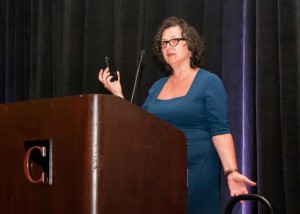Nurse Practitioners & the Media: an untapped source journalists & the public need to know more about. Trust me.
I am posting this from 30,000 feet up on a flight returning from the National Symposium of Nurse Practitioners held in Cooper Mountain Colorado. Wow. The Rocky Mountains are gorgeous. This city gal opened the door to her patio the first evening and a baby squirrel made her way in to my surprise. A loud shoo sent her running out to my relief. There’s just so much nature I can handle.
I was honored to keynote this group of 1000 Nurse Practitioners (NPs). My talk, “Adapt & Thrive: Health Care in the Digital Era” (shout out of thanks to CHMP NAC member Pat Thomas who helped me coin that title). My message- new media is where NPs can bring their voices. Their voices are needed and the digital media landscape is where they can address issues that will influence healthy public policy, educate the public and advocate to remove barriers that limit their scope of practice, create equity in reimbursement in both federal and private insurance programs and gain access to more federal funding to create innovative models of care in communities across the United States.
I am posting this from 30,000 feet up on a flight returning from the National Symposium of Nurse Practitioners held in Cooper Mountain Colorado. Wow. The Rocky Mountains are gorgeous. This city gal opened the door to her patio the first evening and a baby squirrel made her way in to my surprise. A loud shoo sent her running out to my relief. There’s just so much nature I can handle.
I was honored to keynote this group of 1000 Nurse Practitioners (NPs). My talk, “Adapt & Thrive: Health Care in the Digital Era” (shout out of thanks to CHMP NAC member Pat Thomas who helped me coin that title). My message- new media is where NPs can bring their voices. Their voices are needed and the digital media landscape is where they can address issues that will influence healthy public policy, educate the public and advocate to remove barriers that limit their scope of practice, create equity in reimbursement in both federal and private insurance programs and gain access to more federal funding to create innovative models of care in communities across the United States.








